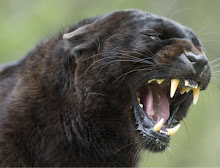
The 2006 season saw the Panthers play with an offensive line that looked to many as though a weekly lottery was held to determine the starting lineup. While this season’s O-line is far more stable and is actually starting to play as a relatively cohesive unit, the critics are still dissatisfied with their collective performance. Just a few quotes from recent message boards:
“...Why has our O-line sucked, yet we do not address it as a need in the off season? Been that way for a while now...”
“... I can cheer, scream, yell and cry, but it won't help an O-line with NO LT & a D-line that doesn't care & Smith can't do it all...”
“... There are areas of concern each off-season, but we've had roughly the same concerns since 03. The O-line needs rebuilt, yet it doesn't happen...”
The truth of the matter is this- the Carolina Panthers offensive line is actually much better than many of us realize. Let’s take a look at some stats current as of Monday following the loss to Green Bay.
The Panthers rank 8th in the NFL in rushing average at 4.2 yards per carry. They rank 12th in rushing yards per game at 120.2. Okay, so those aren’t any surprise and we could all look at those same numbers on NFL.com. But there’s another way to look at the performance of the offensive line beyond the rushing stats and the only measure of how the offensive line pass protects- quarterback sacks. By the way, the Panthers rank 18th in the league having allowed 23 sacks.
The Carolina running backs have carried the ball 255 times this season. This does not include H-backs, WR end-arounds, QB sneaks, etc. This number is for running backs only (fullbacks are included as RB’s in this case).
Of those 255 rushing attempts, 33 (13%) were made to the outside of the left tackle, 33 (13%) were made behind the left tackle and between the left tackle and guard. On the right side of the O-line, 31 (12%) attempts were made outside the right tackle while 46 (18%) times runs are made behind the right tackle and between the right tackle and right guard. Now that you know the numbers, let’s put some names to those rushing attempts:
LT LG C RG RT
Wharton Wahle Hartwig Bridges Gross
33(13%) 33 (13%) 112 (44%) 46 (18%) 31 (12%)
It appears the Panthers like to run right, like 30% of the running plays they have are designed to go right. The league average running to the right side of the O-line is but 23%.
The Panthers run to the left just as much as anyone else in the league at a 26% clip. So, while the rest of the league runs between the guards 50% of the time, Carolina only keeps it in the middle 44% of the time. So, why is right all right for the Panthers? Because running behind Jordan Gross and Jeremy Bridges gets the Panthers 4.79 yards per carry while the league average is only 4.165 yards per carry. The right side of the Panthers offensive line produces better than a half yard per carry more than the remainder of the league. As a matter of fact, running outside Jordan Gross at 5.1 yards per carry is 4th best in the NFL. Running between Gross and Bridges yields 4.48 yards per carry (17th in the league).
Let’s use the same drawing above to see exactly where the rushing yards really come from and their respective league rankings:
LT LG C RG RT
Wharton Wahle Hartwig Bridges Gross
33(13%) 33 (13%) 112 (44%) 46 (18%) 31 (12%)
5.23 YPC 3.16 YPC 3.93 YPC 4.48 YPC 5.1 YPC
(4th) (30th) (18th) (17th) (4th)
While the Panthers offensive line is slightly below average in pass protection, both Wharton and Gross are two of the best in the league when it comes to run blocking. The argument could easily be made that their pass protection would be much better with the same QB behind them from one week to the next. We all know each QB has his own idiosyncrasies and his own mobility habits that become instinct for the O-line after they’ve played together for any length of time. Each new QB presents a new set of habits and movements the O-line must learn and adapt to. That being said, the obvious difficulty the team must overcome is the below average ability to run between the tackles. The 77 running back carries toward Gross and Bridges have provided 369 yards of offense while the left side has blocked for 277 yards.
Another area of the running game the Panthers excel upon is the power running game. On 3rd and 4th down with 2 yards or less for either a first down or TD, the Panthers succeed in getting a 1st down or TD 74% of the time, 6th best in the NFL.
So the next time one begins to question the offensive line, remember these facts and also remember the names associated with them. Gross and Wharton are among the league’s best when it comes to run blocking and would most certainly be among the league’s best in pass protection if they were afforded the luxury of the same QB taking the snaps every week.
Kelly L. Cook
Michele Benton-Cook


No comments:
Post a Comment